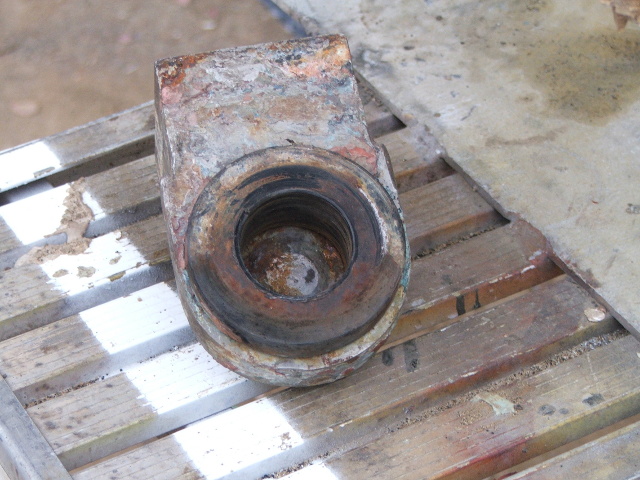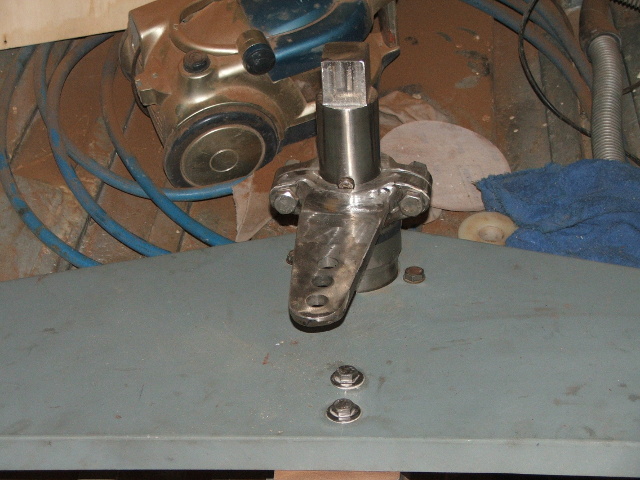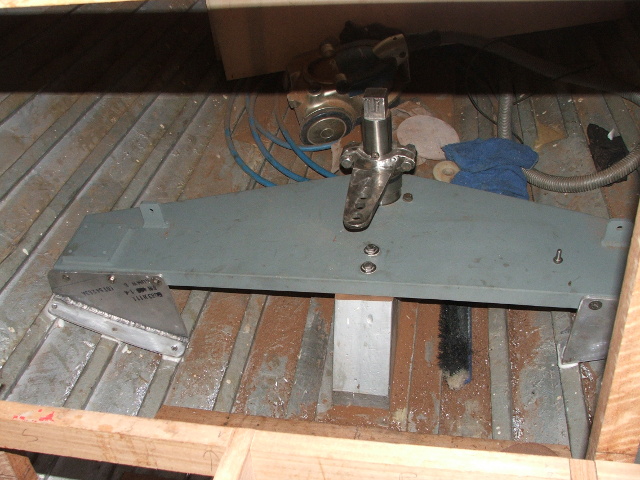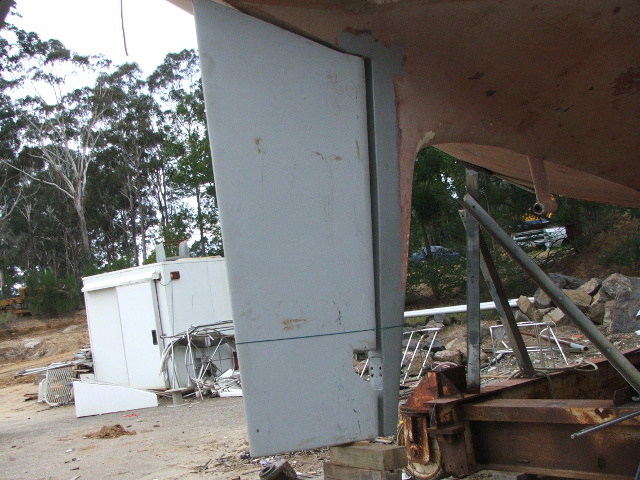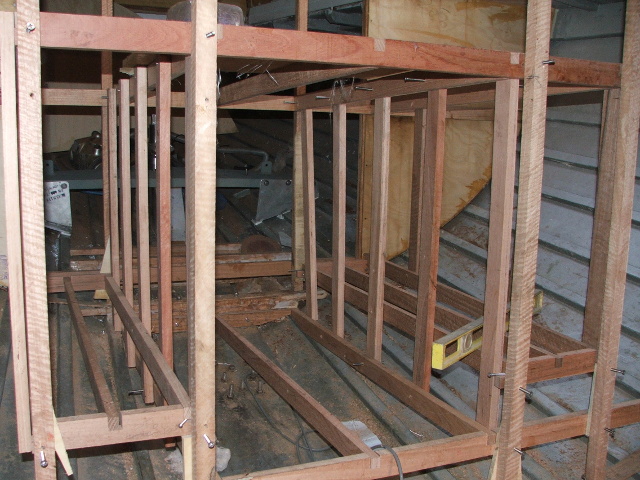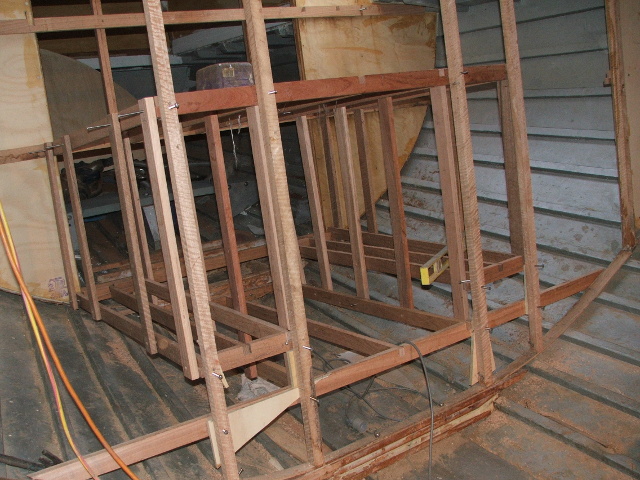Finally the new rudder is swinging off the back of the boat (almost).
There is some serious engineering involved in getting a rudder this big to swing at the touch of a finger. Then there is the problem of how to stop the rudder falling through the hull and down to the bottom of the deep blue sea.
The original rudder was supported at the bottom by a bearing block bolted to a rather flimsy skeg. The rudder supported the skeg as much as being supported by it.
The new rudder is supported at the top of the stock by a bearing that sits under the tiller arm. The tiller arm is clamped onto the rudder stock and locked in place by a key. The bearing surface is made of vesconite which is a material that is stable when wetted (ie, it does not shrink or expand).
We are using hydraulic steering. The ram is mounted on a solid aluminium plate that is bolted to the housing of the rudder stock and the hull. This means the ram is pushing against itself, trying to tear the aluminium plate in half rather than pushing against the hull and possibly tearing the stern of the boat in half.
Battery rack
We also got the timber for the battery racks cut and drilled. There is one rack on each side of the fuel tank, all of which is under the cockpit floor. We’re just about ready to permanently bolt and glue this entire structure in place now.

